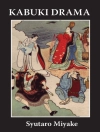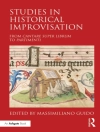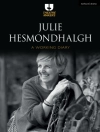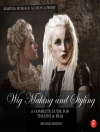For over six years, The Woman in the Story has been the go-to resource for writers who want to be gender-mindful when they figure how to create female characters. Inspired by female psychology and gender issues, this how-to book casts a refreshingly honest and empowering women-centric light on every stage of the screenwriting process.
表中的内容
Acknowledgments
Foreword by Susan Cartsonis, Producer What Women Want & The Duff
Introduction to the Second Edition by Helen Jacey
1. The Power of the Female Protagonist
Why Choose a Female Protagonist
Being Wise
The Feminine Super Themes
2. Going Against Type: The M-Factor
Choosing a Character
Creating Dimension
The Dimensionality Diagram
Stereotypicality
Archetypality
Relatability
Credibility
Memorability
Originality
The Memorability Factor
A Memorable Story
Likeability
3. Making It Personal: Using Role-Choices
How to Use Role-Choices
Role-Choices and Maturity
Heroine
Nurturer
Dependant
Believer
Masculine Role-Choices
Case Study: Female Characters in Game of Thrones
4. The Real Heroine’s Journey
The Heroine’s Journey in Male Protagonist Stories
Building a Journey of Emotional Identity
Using a Phase Approach
Phases and Structure
Identity Phases
Relating Phases
Momentum Phases
Case Study: Wild
5. Women in Trouble: The Layers of Conflict
Tricky Women
Internal Conflict
Significant Other Conflict
Family and Friends Conflict
Work and Community Conflict
Society Conflict
National Conflict
Global Conflict
Case Study: Girlhood
6. Feeling Good and Finding Love: The Layers of Union
Internal Union
Significant Other Union
Family and Friends Union
Work and Community Union
Society Union
National Union
Global Union
Cast Study: Maleficent
7. Creating Female Driven Biopics
Why a Biopic?
Story Types for Female Protagonist Biopics
Researching the Character
Case Study: Saving Mr. Banks and Bessie
8. Creating TV Female Protagonists: All About the Metaphoric Wound
Meandering Female Protagonists
Finding the Theme
Wound Elements
Case Study: Orange is the New Black
9. The Unsung Female Protagonist
Uncharted Story Territory
Composite Female Characters
Pushing the Boundaries
Transmedia Female Protagonists
Case Study: Norma Bates in Bates Motel
10. Bringing It All Together: Analysis of The Hunger Games
Super Theme
M-Factor
Role-Choices
Phases on the Journey
The Metaphoric Wound
Layers of Conflict
Layers of Union
References
Film
Television
Further Reading
About the Author
关于作者
Helen Jacey is a professional screenwriter, lecturer, and author. She received an MA in Screen-writing at the London Institute and her doctorate from the University of the Arts London. Realizing that most screenwriting books don’t address the female character, Helen embarked on her own quest to explore gender issues and screenwriting, leading her to write The Woman in the Story.
Before Helen became a screenwriter, she worked for international aid agencies, developing pro-grams for vulnerable women and children. This work inspired some of her first original screenplays. She has written projects for numerous UK and European production companies, including four bio-pics about legendary women — including Eleanora Duse, Jean Rhys, Mina Loy, and Duchess Anna Amalia of Weimar! Helen widely lectures on screenwriting all over the world and is a story consultant for independent filmmakers. Her highly popular Writing the Heroine’s Story seminar is run several times a year, attended by international screenwriters and fiction writers. She lectures widely at uni-versities as a guest lecturer, and also gives keynote speeches, most notably one in honor of Liv Ullmann in Oslo. Helen is currently writing a new screenwriting book and researching her first novel. She is married, a mother and stepmother. For more updates on Helen’s work visit www.helenjacey.com












